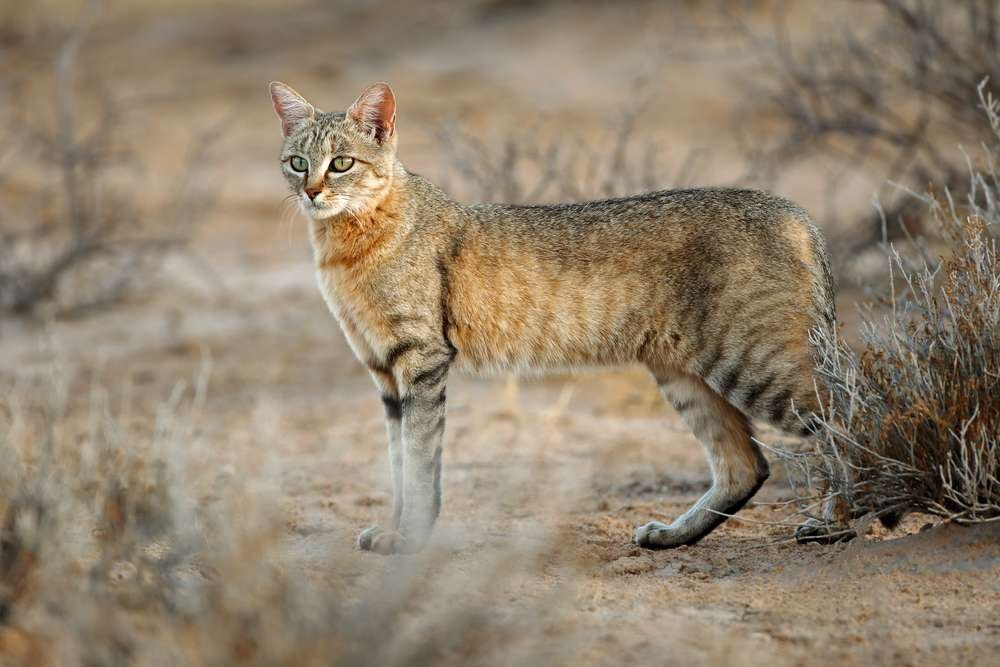African Wildcat
- Felis lybica
- IUCN Status: Least Concern
- Trend: decreasing

- Kingdom: Animalia
- Phylum: Chordata
- Class: Mammalia
- Order: Carnivora
- Suborder: Feliformia
- Family: Felidae
- Subfamily: Felinae
- Genus: Felis
Share:
General Information
The African wildcat is a small wildcat species native to Africa and Asia
Fun Facts!
The African wildcat is the ancestor of the domestic cat and is the most common wildcat in Africa. They are an important part of the African ecosystem and help to control populations of rodents and other small animals.
Description
- Length: 40.6–55.8 cm
- Weight: 3.2–4.5 kg
- Lifespan: up to 12 yrs in the wild
Ecology and Behaviour
African wildcats are active mainly by night and search for prey. Their hearing is so fine that they can locate prey precisely. They approach prey by patiently crawling forward and using vegetation to hide. They rarely drink water. They hunt primarily mice, rats, birds, reptiles, and insects.
Conservation
African wildcats were listed as a Least Concern on the IUCN Red List in 2022, though their populations are in decline due to habitat loss, genetic pollution by domestic cats. and hunting.
Distribution and Habitat
The African wildcat occurs throughout zambia, across Africa, asia and can live in a variety of habitats. They are not often seen. They hunt at night, preying on small mammals, birds, frogs and insects. Their young are born in a hollow tree or burrow.
Interaction with humans
African wildcats are sometimes kept as pets, but they can be difficult to tame and require a lot of space. They are also very shy animals and will usually avoid humans.
No donation to this project yet.
| M | T | W | T | F | S | S |
|---|---|---|---|---|---|---|
| 1 | 2 | 3 | 4 | 5 | 6 | 7 |
| 8 | 9 | 10 | 11 | 12 | 13 | 14 |
| 15 | 16 | 17 | 18 | 19 | 20 | 21 |
| 22 | 23 | 24 | 25 | 26 | 27 | 28 |
| 29 | 30 | 31 | ||||


